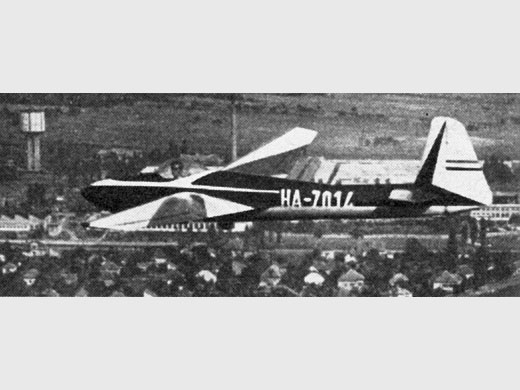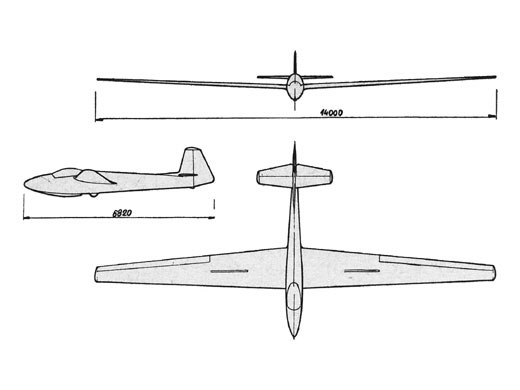
Zsebõ Z-04 Béke
| DONNÉES GÉNÉRALES |
| Année du premier vol (ou de design, si seul projet) |
1955 |
| Pays | Hongrie |
| Designer(s) | ZSEBÕ, Ferenc & al. |
| Premier constructeur | Central Workshop of the Hungarian Aeronautical Association, Dunakeszi |
| Type d'appareil | Planeur |
| Fonction | Voltige |
| SPÉCIFICATIONS TECHNIQUES |
| Envergure | 14 m |
| Longueur | 6.82 m |
| Hauteur | -- |
| Allongement | 14.3 |
| Surface alaire | 13.7 m2 |
| Profil aile | Emplanture NACA 23015, saumon NACA 23012 |
| Masse à vide | 230 kg |
| Masse maxi | 370 kg |
| Charge alaire | 27.1 kg/m2 |
| Vitesse mini | -- |
| Vitesse maxi | 400 km/h |
| Finesse maxi | 24 à 90 km/h |
| Taux de chute mini | 1 m/s à 83 km/h |
| Nb sièges | 1 |
| Structure | Fuselage et empennage en métal léger. Ailes en bois, monolongeron, entièrement coffrée en contreplaqué. |
AUTRES INFORMATIONS
SOURCES DOCUMENTAIRES
| Liens WEB | Site : Hungarian Gliders (site de Gábor Fekecs) . Texte + 4 photo + plan 3 vues + specs. (2010-06-03 CL) Site : UIUC Applied Aerodynamics Group . NACA 23015 airfoil. (2010-05-22 JM) Site : UIUC Applied Aerodynamics Group . NACA 23015 fichier DAT. (2010-05-22 JM) Site : UIUC Applied Aerodynamics Group . NACA 23012 airfoil. (2010-05-22 JM) Site : UIUC Applied Aerodynamics Group . NACA 23012 fichier DAT. (2010-05-22 JM) |
| Livres | The world's sailplanes par OSTIV (1958) [p. 142 - 145. Photo + 3-vues + specs + description]. |

Team J2mcL © 2003 -
- Pages optimisées pour Mozilla Firefox


